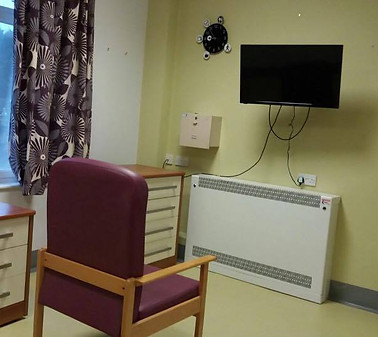

GUBING WANG
HELLO I'M GUBING
I LOVE SOLVING PROBLEMS
PrimeTime

Problem Breifing
This is my grandma, who has suffered dementia for five years. It is heartbroken to see her get gradually detached from the world and I feel helpless as currently there is no medical cure for dementia until I undertook the design-led innovation course jointly taught by Imperial College and Royal College of Art. During this course, I developed a communication tool for the people with dementia and their caregivers together with other four bright students through a user-centred and iterative approach.



Interviews and Insights
To understand dementia better, we went out to speak with researchers, healthcare professionals, caregivers, people with dementia and their relatives in the UK and I also draw my experience from observing my grandparents at home. We then uncovered valuable insights using mapping tools (e.g.journey map, empathy map):
1) People with dementia stick to their routines strongly and have difficulty dealing with change
2) For any events outside their routine, they are repeatedly asking for reminders or have to be repeatedly reminded of what’s happening
3) Caregivers (e.g. my grandpa) have many other tasks to do, such as housework and cooking, which means they cannot dedicate all their time to caring for people with dementia
4) Caregivers know the last thing you should ever do is to tell a person with dementia that they are wrong or that you are repeating information to them, however, it is hard to control one's emotion when s/he has to continuously repeat the same information.
5) All the people with dementia we know have the habit of looking at the clock to make sense what's happening even though some have lost the ability to read the clock
6) The Montessori method is becoming a popular treatment for dementia which involves more senses (e.g. visual, audial) and has been shown to engages the brains more.
7) It is a common practice to keep a schedule book for each patient in care homes and hospitals.



Ideation



In this diverge phase, we have applied a few ideation and judgment tools (e.g. brainwriting, six hats, rose-thorn-bud) and come up with ideas ranging from service, product, system and environment.




Final Design - PrimeTime
PrimeTime, a novel clock uses visual reminders to help caregivers communicate with the person with dementia to initiate new activities and reduce repetition.
How does it do this?
As the hour hand moves, it points to the activity taking place. The activity is represented by a glowing circular icon. When the next activity starts, the previous one disappears.
Key features
1) The distinction of the hour hand and the minute hand. The hour hand is white, to follow the white background of the icons. Even if a person can no longer read a clock, the hour hand will still draw their attention to the icon. The minute hand is maintained to keep PrimeTime looks familiar to the users since the mechanical clocks have been having two hands for centuries.
2) We allow caregivers to upload any images as events icons, however, we provide a default list of industry standard icons, commonly used in care homes.
3) We added a glow around the icons, to draw the attention of the users to the current event.
4) Current and future events are displayed surrounding the clock to allow the users to prepare for any upcoming activities.
5) An audio notification is added as an option so that gentle music will start to play at an event to attract more attention if needed.
6) All these features are controlled via a phone app, held by the caregiver.
The app
The app is free to download, and it connects with the clock over a wireless network after a one-time guided setup. The dashboard let the caregiver know what the clock at home is displaying. The caregiver can add and edit events easily with a wide range of icons.




Prototyping and Testing
The final design is a result of several design iterations and the above features are direct results from consultations with specialists, usability testings and interviews. Each feedback corresponds to each feature of PrimeTime in the same order.
We brought our prototype to the Royal Hospital of Neuro-disability (RHN), at where specialise in caring for patients at the extreme end of the dementia spectrum.
1) Principal Medical Officer of RHN: “One hand will make the person wonder whether it measures minutes or hours”
2) Speech & Language Therapist: “Symbols and pictures are effective when communicating with people with Dementia.”
We took our prototype to the home of an elderly couple. The husband Kee, has early onset dementia, and the wife Ghiok, is his caregiver. Kee, has trouble remembering to take his pills, and Ghiok, has to keep reminding him, he forgets this, she reminds him again, and the cycle continues. We left our prototype in their home for a full day testing and gathered feedback.
3)Kee: “I can see my daily schedule by just looking at my wall clock”
4)Ghiok: “The icons are clear, and you could make them stand out more.”
We also introduced our prototype to two caregivers who are the daughter and son of a people with dementia respectively and asked for their feedback.
5) Daughter: “What if the person is in another room and can’t see the clock?”
6) Son: “I’m at work during the day so I can’t control what’s happening at home”
Through this course, we have applied the design methods and tools in practice, and I have a visceral encounter about the importance of design research and co-creation.